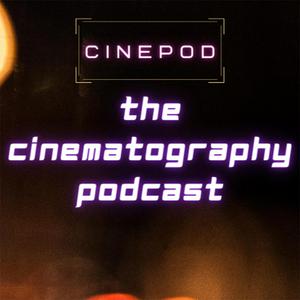Andrew Bird: editing The Seed of the Sacred Fig in secret
Mohammad Rasoulof, the Iranian director whose films have consistently challenged the authority of the Islamic Republic, has faced imprisonment and persecution for his artistic vision. While serving time in Iranian prison for his films A Man of Integrity and 2020’s There Is No Evil, Rasoulof began to think about his next film, The Seed of the Sacred Fig. He was released from prison and began filming The Seed of the Sacred Fig in absolute secrecy while still under close scrutiny by the government.
The Seed of the Sacred Fig is a gripping drama that explores the impact of authoritarian rule and political unrest on a family in Iran. Iman has just began a new job as an investigating judge in Tehran's Revolutionary Court when protests break out in Tehran. Paranoid about being hunted by protestors for his role in the regime, he clashes with his wife and daughters at home. When his gun goes missing, he suspects one of them has taken it, leading to a breakdown of trust within the family.
In late 2023, Rasoulof reached out to editor Andrew Bird, with whom he had previously collaborated on Manuscripts Don't Burn in Germany. This time, however, the collaboration would be fraught with extraordinary challenges. With Rasoulof still in Iran, direct communication was severely limited, relying on long phone conversations facilitated by an interpreter. Andrew received an English translation of the script, but his lack of Farsi proficiency presented a unique hurdle. “I have edited a number of films in languages I don't speak,” says Andrew. “It's pretty easy to tell, even without the language, which performance is good and which isn't. I don't really need to understand the language for that.”
Rasoulof sent footage in small, uploaded files, only with a few favorite takes marked. Andrew began editing as the film was being shot, piecing together the narrative puzzle without knowing the full scope of each scene. He was particularly struck by the film's powerful imagery and the challenging locations, given the clandestine nature of the production. “It was weird because normally you have a director with you so you're throwing ideas out there and the director's throwing ideas out there, and then suddenly something new emerges, and that leads you to places where you'd never have anticipated getting to,” says Andrew. “All that was lacking in this process because we were in two separate countries. I had to rely on myself, I had to really examine everything a lot more closely. It was enriching as well, because it really gives you more confidence in your own decisions and your own instincts.”
After completing filming, Rasoulof made a daring escape from Iran, crossing the border illegally to return to Germany. He has since been able to travel and promote The Seed of the Sacred Fig, which has garnered critical acclaim, including multiple awards at the Cannes Film Festival and an Academy Award nomination for Best International Feature. For Andrew, the experience was profoundly meaningful. “I feel incredibly privileged to be part of this,” he says. “I think when I started making films, it was with this naive belief that you could change something in the world with your art. To be able to work on a film that does make a little difference somewhere in the world is an incredible privilege. I'm incredibly grateful for the opportunity to do it.”
The Seed of the Sacred Fig is currently available for purchase on VOD.
Sponsored by Hot Rod Cameras: https://hotrodcameras.com/
Sponsored by Laowa by Venus Optics: https://laowacine.com/
The Cinematography Podcast website: www.camnoir.com
YouTube: @TheCinematographyPodcast
Facebook: @cinepod
Instagram: @thecinepod
Blue Sky: @thecinepod.bsky.social

